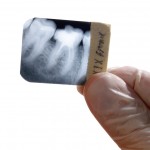
As more patients seek to retain their teeth the number of root canal treatments (RoCTs) carried out has increased substantially. While success rates are high failures of RoCTs do occur and the two approaches to tooth retention are root canal retreatment and root- end resection.
The main aim of this updated Cochrane review was to assess effects of surgical and non-surgical therapy for retreatment of teeth with apical periodontitis.
Methods
Searches were conducted in the Cochrane Oral Health Trials Register, the Cochrane Central Register of Controlled Trials (CENTRAL), Medline, Embase, ClinicalTrials.gov and the World Health Organization (WHO) International Clinical Trials Registry Platform databases with no restrictions on language or publication date. Randomised controlled trials (RCTs) in patients having root canal retreatment of teeth presenting periapical pathosis were considered.
Outcome measures were healing of the periapical lesion assessed after one-year follow-up or longer; postoperative pain and discomfort; and adverse effects such as tooth loss, mobility, soft tissue recession, abscess, infection, neurological damage or loss of root sealing material evaluated through radiographs.
Results
- 20 RCTs were included
- 2 trials with high risk of bias assessed surgery verses a non-surgical approach
- 18 trials assessed differing surgical protocols.
- There was no clear evidence of superiority of the surgical or non-surgical approach for healing at one-year follow-up, RR= 1.15 (95%CI; 0.97 to1.35); or at 4- or 10-year follow-up although the evidence is very low quality.
- 1 RCT providing low quality evidence found more surgically treated patients reported pain in the first week after treatment RR= 3.34 (95%CI ;2.05 to 5.43).
- In terms of surgical protocols there was
- inconclusive evidence from 1RCT (low quality evidence) that ultrasonic devices for root-end preparation may improve healing one year after retreatment, compared to traditional bur, RR=1.14 (95%CI; 1.00 – 1.30)
- Low quality evidence (1 RCT) of better healing when root-ends were filled with MTA rather than orthograde GP root filling, after 1-year follow-up, RR=1.60 (95%CI 1.14 – 2.24).
- No evidence that using CBCT rather than radiography for preoperative evaluation was advantageous for healing nor that any magnification device affected healing more than any other.
- No evidence that antibiotic prophylaxis reduced incidence of postoperative infection RR= 0.49 (95%CI; 0.09 to 2.64 ) one RCT, 250 participants; low quality evidence).
- Some evidence that using a papilla base incision (PBI) may be beneficial for preservation of the interdental papilla compared with complete papilla mobilisation There was no evidence of less pain in the PBI group at day 1 post-surgery.
- Low quality evidence that adjunctive use of a gel of plasma rich in growth factors reduced postoperative pain compared with no grafting.
- There was no evidence that use of low energy level laser therapy (LLLT) prevented postoperative pain (very low quality evidence).
Conclusions
The authors concluded:-
Available evidence does not provide clinicians with reliable guidelines for treating periapical lesions. Further research is necessary to understand the effects of surgical versus non-surgical approaches, and to determine which surgical procedures provide the best results for periapical lesion healing and postoperative quality of life. Future studies should use standardised techniques and success criteria, precisely defined outcomes and the participant as the unit of analysis.
Comments
This review updates the 2007 Cochrane review and has been expanded to include different aspects of surgical approaches. Although 20 RCTs have been included the quality of these studies is low to very low. In addition, the majority have been performed in the academic setting so the generalization of these results to the routine general practice needs to be made cautiously. Previous reviews (other references) have addressed some of the areas considered in this review. However, they have generally included a broader range of study designs with a greater risk of bias consequently their findings are difficult to compare. This review shows that further high quality RCTs are required to address all of the questions raised in this review.
Links
Primary paper
Del Fabbro M, Corbella S, Sequeira-Byron P, Tsesis I, Rosen E, Lolato A, Taschieri S. Endodontic procedures for retreatment of periapical lesions. Cochrane Database of Systematic Reviews 2016, Issue 10. Art. No.: CD005511. DOI: 10.1002/14651858.CD005511.pub3.
Other references
Dental Elf – 26th Jan 2016
Root canal retreatment: review suggests microsurgery better than retreatment
Dental Elf – 21st Feb 2013
Review finds predictable outcomes with modern endodontic surgery techniques.

Endodontic retreatment: Surgical or non-surgical approach? https://t.co/J4fvo7ZqHp
Endodontic retreatment: Surgical or non-surgical approach? https://t.co/mtwrrFOoui
Is a surgical or non-surgical approach best for endodontic retreatment? https://t.co/mtwrrFOoui
Non-surgical or surgical approaches for endodontic retreatment? https://t.co/mtwrrFOoui
No clear evidence of superiority for surgical or non-surgical approach for endodontic retreatment https://t.co/mtwrrFOoui
Don’t miss- Endodontic retreatment: Surgical or non-surgical approach? https://t.co/mtwrrFOoui